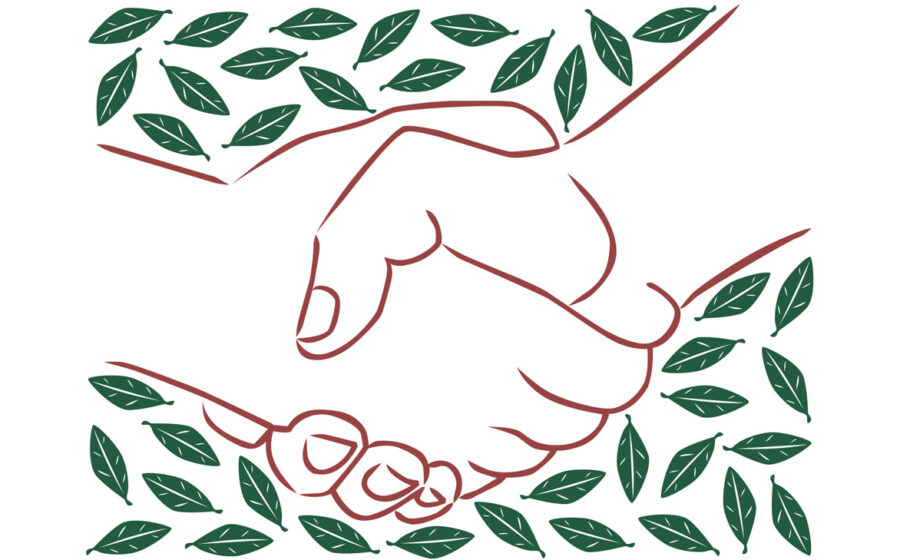[B]eing a small roasting company has its advantages. Some of the perks are small-batch sizes, lower overhead, perhaps a more artisanal approach to coffee, and intimate relationships with your customer base. It also means you don’t have to tie up all your cash flow in green coffee. You might order one pallet at a time from a large importing company or a boutique exporter. This cuts down your need for large green storage and the risk that comes with trying to use all of your green coffee before it begins to show age.
All of this works really well until you develop a passion for origin. What happens when you want to stop talking about the quality and ethics passed to you from an importer and actually go in search of coffees yourself? How do you go to origin, find the coffees you want, and get them back to your roaster?
These were problems I was faced with a few years ago. I’d begun to look into direct trade and I learned that a forty-foot container holds around 37,500 pounds of green coffee. Among problems like storage and variety of my offerings, I knew I wouldn’t use a full container from one origin.
By networking with other smaller roasters and forming a group, you might discover that you all have contacts at origin already.
My solution to these problems was to form a buying group. There are many benefits of this setup for small roasters. First off, splitting a container solves the problem of not using all its green coffee in a timely manner. It also eliminates the problem of storing an entire container of coffee in an acceptable way. It allows you direct access to the coffees you’re buying, giving you a closer look at the farm, the producer, and the coffees. It can give you access to coffees that aren’t available through importers. It can also provide a group to bounce roast profiles off of and discuss other problems with.
Traveling to origin with your buying group can produce better results than a solo trip. A group trip tends to eliminate travel fears and they heighten the experience because you have other like-minded people to share it with. Visiting farms as a group also makes a great first impression. It shows farmers that your interest in their coffees provides a tangible opportunity for them to sell their coffee and also to begin relationships that may produce a group of consistent buyers. In my experience, quality producers love meeting the roasters their coffee ends up with.

Sounds like a dream, right? Well, there are downsides to buying groups, too. One major obstacle is the sheer logistics of getting the coffee from origin to the roaster. There are a lot of steps and pitfalls along the way. An exporter can be contracted through the wet mill or independently. From there the group has to decide which port is best, which might not be clear.
Beyond logistics, there are other factors to consider when working in a group. If the members of the group are close geographically there might be concerns about competition. At origin there might be fighting over micro-lots on the cupping table. How do you decide which roaster gets the lot? Personally we have settled some disputes by bidding on the lots, which ends up in an amazing farm-gate price for the producer. Deciding who handles the money is another large component. One member typically handles the finances while the others agree to hold up their ends of the deal, or everyone paysup front but there is still someone holding the money. In this sort of agreement contracts can be useful in making sure everyone has agreed upon the financial aspects.
Clearly there’s a certain amount of trust involved. You have to be comfortable with the members of your group. All members have to be committed financially to the deal. Ideally you would all share the same passion for coffee and have the same goals in mind as far as green quality and a resolve to pay the right price for quality coffee.
It all starts with conversation. By networking with other smaller roasters and forming a group, you might discover that you all have contacts at origin already. Even if the members of the group are close geographically, if all the roasters can raise their green bean quality then each roaster can produce a better product. This sort of amenable feeling will help raise the standards and quality of coffee available for customers. In theory, this in turn would allow the group to continue to work together, revisiting producers that offer the types of lots the group is interested in. This symbiotic relationship
benefits all parties.
I am now involved in three buying groups. A decent portion of my East Africans and a majority of my Central and South Americans come from these. Some of my best friends in the industry, the people I turn to for advice, were made in these buying groups. By creating a specific goal for green coffee, choosing a group based on common beliefs, traveling to origin and buying together, clearly defining each members’ financial responsibilities, and finally, roasting the coffee to its utmost potential, small roasters can achieve the direct-buying relationships they desire despite their lack of buying power.
—Jon Allen is the owner/roaster at Onyx Coffee Lab, with locations is Fayetteville and Springdale, Arkansas. Illustrations by Cynthia Meadors.















